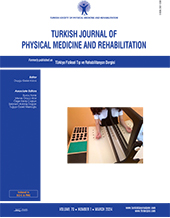The epidemiology of osteoporosis in Türkiye: A comprehensive analysis using the e-Nabız database
2 Ministry of Health of Türkiye, Vice-Minister, Ankara, Türkiye DOI : 10.5606/tftrd.2024.13505 Objectives: The study aimed to define the epidemiology of osteoporosis and low bone mass based on bone mineral density at the femoral neck and the lumbar spine in adults 50 years and older in Türkiye.
Patients and methods: The retrospective study included all patients diagnosed with osteoporosis with a bone mineral density scan between January 2016 and May 2023 in the e-Nabız database, a government-run online healthcare database including over 68 million of active users. The data was categorized according to patient demographics, presentation age (0-17, 18-64, and >65 years), geographic regions, and healthcare levels.
Results: A total of 4,253,039 patients (723,863 [17.0%] males, 3,529,176 [83.0%] females) were diagnosed with osteoporosis. Of the patients, 2,432,607 (57.2%) belonged to the 18-64 years age group, 1,783,690 (41.9%) were in the >65 years group, and 36,742 (0.9%) were in the 0-17 years group. The mean age at presentation was 61.1±14.4 (range, 0 to 110) years. The Marmara region had the highest number of cases with 1,330,325 (31.3%), and the Aegean region had the lowest with 194,009 (4.6%). Istanbul had the highest rate of osteoporosis as a province (18.4%), followed by Ankara (7.5%). The lowest rates were recorded in Bayburt (0.0%) and Tunceli (0.1%), respectively.
Conclusion: Registry studies provide reliable information in epidemiological studies. In this study, the first of its kind in Türkiye, we reported the geographical distribution of osteoporosis. As expected, there were more osteoporosis patients in the more densely populated areas of the country. Secondary and tertiary care centers had more entries compared to primary care centers. The annual incidence of osteoporosis showed a declining trend over the years.
Keywords : Big data, national health, osteoporosis
















